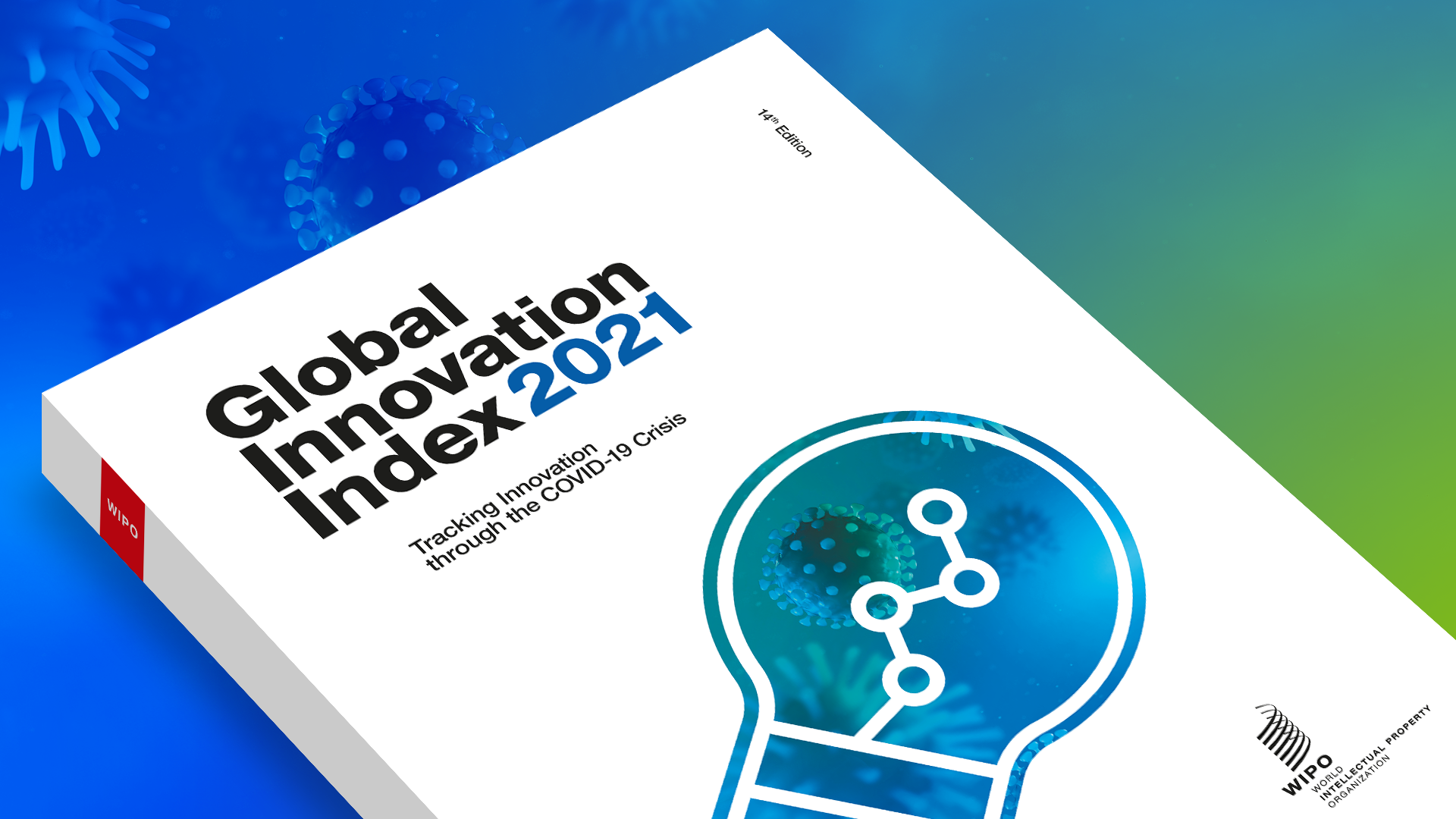The 14th edition of the Global Innovation Index (GII) has just been published by the World Intellectual Property Organization (WIPO).
Since the first edition was released in 2007, the GII has become an invaluable tool with which to measure innovation. As always, the 2021 edition ranks the innovation taking place in 132 global economies by using 81 indicators, but this edition also introduces a ‘Global Innovation Tracker’. This examines innovation trends against the various stages of the innovation journey, namely: science and innovations investments; technological progress; and socioeconomic impact.
Understandably, the coverage in this year’s report contains an additional feature focussing on the one theme that has affected all our lives over the last 18 months, ‘Tracking Innovation through the COVID-19 Crisis’.
How has COVID-19 influenced innovation?
According to the 2021 GII governments and enterprises in many parts of the world scaled up their investment in innovation despite the massive human and economic cost of the pandemic. The Index shows “a growing acknowledgement that new ideas are critical for overcoming the pandemic and for ensuring post-pandemic economic growth.”
Before adding that R&D expenditure appeared to be more resilient to the downturn caused by the pandemic than it had been to previous slumps, the narrative also admits “the impact of the crisis has been highly uneven across industries”.
Businesses producing software, internet and communications technologies, the hardware and electrical equipment industry and pharmaceuticals and biotechnology increased their investment in innovation and R&D. Conversely, those whose businesses rely on in-person activities – for example transport and travel – reduced their investment.
WIPO Director General Daren Tang was quick to underline the impressive way innovation has continued to grow during the last 18 months and the vital role it will play during the recovery:
“This year’s Global Innovation Index shows us that in spite of the massive impact of the COVID-19 pandemic on lives and livelihoods, many sectors have shown remarkable resilience – especially those that have embraced digitalization, technology and innovation. As the world looks to rebuild from the pandemic, we know that innovation is integral to overcoming the common challenges that we face and to constructing a better future.”
What other trends in innovation has the 2021 GII discovered?
WIPO shared some of their key findings in the press release that accompanied the launch of the GII.
The volume of venture capital deals is growing. Activity increased by 5.8% in 2020 which was higher than the average rate of growth over the last decade.
The publication of scientific articles across the world also grew by 7.6% in 2020. Arguably this could also have been a by-product of the pandemic given some academics had greater flexibility due to having to work from home.
Which countries does the GII rank as the world’s most innovative?
Looking more closely at the innovations in levels in individual countries the GII reported:
- Seven European countries continue to rank in the global top 10 including Switzerland (No1) who have topped the ranking for the last eleven years and Sweden (No2) who together lead in “international patent applications filed via WIPO’s Patent Cooperation Treaty (PCT)”.
- The U.S.A. has stayed in 3rd place for the third year in a row. It also led the way in “key metrics such as patents by origin, the quality of its universities and the impact of its scientific publications and in R&D intensive global companies”.
- The UK maintains it’s position at number 4 in the GII and leads Europe in the quality of its universities and the impact of its scientific publications.
- The other European countries in the global top 10 are The Netherlands (6) , Finland (7), Denmark (9) and Germany (10).
- India (46) continues to maintain its position as the world leaders in “the indicator of exports of ICT services”, South Korea (5) improved its position in the indicators related to “trademarks, global brand value, and cultural and creative services export” and China (12) boasted “19 of the top science and technology clusters worldwide – with Shenzhen-Hong Kong-Guangzhou and Beijing in the 2nd and 3rd spots, respectively”.
- Korea, India and China are joined in the global top 20 by Singapore (8), Japan (13) and Hong Kong (14).
How is the geography of global innovation changing?
The word the GII uses is “unevenly” but there may be signs this is changing.
Although the findings show North America and Europe continue to lead the global innovation landscape, the performance of South East Asia, East Asia, and Oceania is currently the most dynamic and they are closing the gap.
There is also still a definite bias toward high income economies too and China is still the only middle-income economy to make it into the top 30. However, Bulgaria (35), Malaysia (36), Turkey (41), Thailand (43), Viet Nam (44), the Russian Federation (45), India (46), Ukraine (49), and Montenegro (50) have all climbed into top 50.
This could again be a signal change is afoot but in real terms only Turkey, Viet Nam, India and the Philippines are actually catching up. Other than China, these are the only economies with the potential to make any significant changes to the global innovation landscape and that change will only happen (according to Soumitra Dutta, Professor of Management at Cornell University) if these countries are:
“Able to successfully complement their domestic innovation with international technology transfer, develop technologically dynamic services that can be traded internationally, and ultimately have shaped more balanced innovation systems”.

